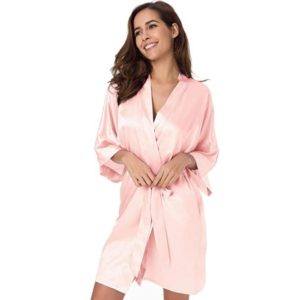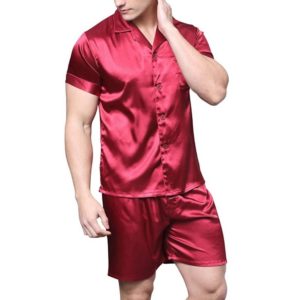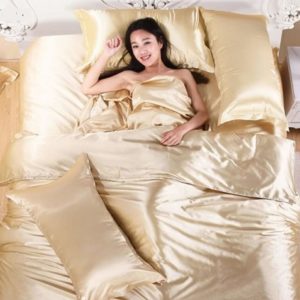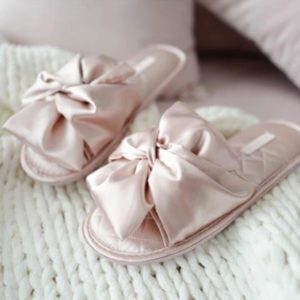Satin Silk Bedding Products
-
Sale!

Satin Silk Pyjamas Set | Long Sleeve Winter Satin PJs | Womens Silk Satin Pajamas
Original price was: $99.$69Current price is: $69. -
Sale!

Women’s Summer Satin Silk Pajamas | Short Sleeve Satin PJs
Original price was: $96.$66Current price is: $66. -
Sale!

Women’s Satin Negligee | Satin Chemise Nightgown
Original price was: $79.$49Current price is: $49. -
Sale!

Women’s Satin Silk Bathrobe | Satin Kimono Robe For Women
Original price was: $99.$69Current price is: $69. -
Sale!

Men’s Winter Satin Silk Pyjamas | Long Sleeve Satin PJs | Sleepwear Loungewear For Man
Original price was: $99.$69Current price is: $69. -
Sale!

Men’s Summer Satin Silk Pajamas | Short Sleeve Satin PJs
Original price was: $99.$69Current price is: $69. -
Sale!

Men’s Satin Silk Bathrobe | Satin Kimono Robe For Men
Original price was: $99.$69Current price is: $69. -
Sale!

Satin Silk Bed Linen | Satin Silk Bedding Set
$133 – $159 -
Sale!

Satin Pillowcase | Satin Silk Pillowcase | Satin Pillow Slip
Original price was: $45.$22Current price is: $22. -
Sale!

Womens Silk Slippers | Indoor Bow Knot Slipper
Original price was: $35.$25Current price is: $25.
Silk and satin – often get confused for each other, they look similar but what are the differences between the two? Despite their similar appearance the biggest difference is that satin is a weave and not a natural fibre, whereas silk is a natural fibre fabric.
SILK CHARACTERISTICS
Silk is a type of fabric that is made from the larva of silkworms, especially the bombyx moi species. Silk is more luxurious and as expected more expensive. This is because of the quality of fibres used to make the fabric, and it’s a more time-consuming fibre to manage.
Its reported that the larvae feed on leaves for 40 days and then spin a pod around themselves to pupate. This ‘pod’ is made of high protein fluid which then can then be made into a silk thread. A single cocoon can produce a high level of raw silk threads. The method is completely natural and a dedicate process that dates back to as early as 6000 BC.
The first reports of silk originate in China – but is produced all over the world today. Once a very exclusive fabric, now it’s widely used for luxury items such as scarfs, gowns, home goods and nightwear. Even though its more popular today, producing silk is still a long tedious process. It is possible to get synthetic artificial silk, but it does not have the same wow factor as the real version.
Silk is a versatile fabric, delicate yet durable. Strong but breathable and insulating, it’s also great for those who have sensitive skin because of its organic non-irritating natural state.
SATIN CHARACTERISTICS
Satin can be made from natural or synthetic fibres. The type of fabric used will reflect the quality and price. Satin is cheaper than its natural counterpart.
Satin can be made from:
• Silk
• Cotton
• Nylon
• Polyester
• Rayon
• Acetate
• Viscose
Satin fabric is traditionally known and recognised for its glossy appearance, similar to silk. The inexpensive and easier to maintain shimmery textile is popular for use in the manufacture of clothing, interior design and costumes.
The thickness of the fabric will vary depending on the fibre content and degree of yarn twist. The quality also is related to the thickness of the satin weave. They way in which the fabrics are woven give the signature glossy finish. You will often notice that satin has one shiny side and a dull side, that is a result of the waving process.
Both silk and satin are brilliant fabrics, Here at Whaleys Fabrics, we sell over 90 varieties of silk and over 30 of satin – so you will not be spoilt for choice. Unsure which will be most suitable for your project? Get in touch with one of our expert team today who will be happy to assist. Check out our range of silk fabric and satin fabric today.
What Is Satin?
You know how a dress is not a gown, but all gowns are dresses? Satin and silk are kind of the same way—satin is technically a type of weaving, rather than a type of fabric. At one point in time, satin was traditionally made from silk, but in the modern-day, it’s not uncommon to find blended satin mixtures that include synthetic fibers like polyester, rayon, and cotton.
Blending satin with synthetic fabrics can result in fabrics that can be much more flexible and smoother than real silk, which is a great benefit to hair and scalp. “Satin is much more forgiving, as it moves with the hair which reduces the friction between the hair fiber and the pillowcase or surface,” explains Hill. Satin also provides the same benefits as silk: It is hypoallergenic, less absorbent, and breathable.
What’s the Difference?
The biggest difference between silk and satin is cost: Silk is more luxurious and pricier, while satin is less expensive and often blended with other fabrics, which means it can be an easy way to save some coin.
Hill also points out that satin pillowcases are more accessible and easier to clean because they are made with synthetic materials that can be thrown into the washing machine. Remember that silk is a natural fiber and satin is not, and check to make sure you’re actually getting the real thing—you’d be surprised. “Be leery of sateen, which is cotton with a different weave,” says Hill. “Even though sateen can feel smooth and silky like silk or satin, it is cotton, and will not deliver the same benefits to scalp and hair as using silk or satin will.”
The Final Verdict
When it comes down to it, whether satin or silk is better for your hair is determined by how rough of a sleeper you are. As long as it is silk or satin, and you can make it through the night with it still on your head, bonnets rule. For those who are rowdy and rambunctious under the covers, pillowcases might be a safer bet.
“My expert advice is [to] use what works best for your sleeping situation and hair texture, type, and length,” says Hill, explaining that she’s personally pro pillowcases because of the dual benefit to the skin on her face. Bergamy believes silk is better for all hair textures, but especially as an added layer of protection for curly and textured hair.
